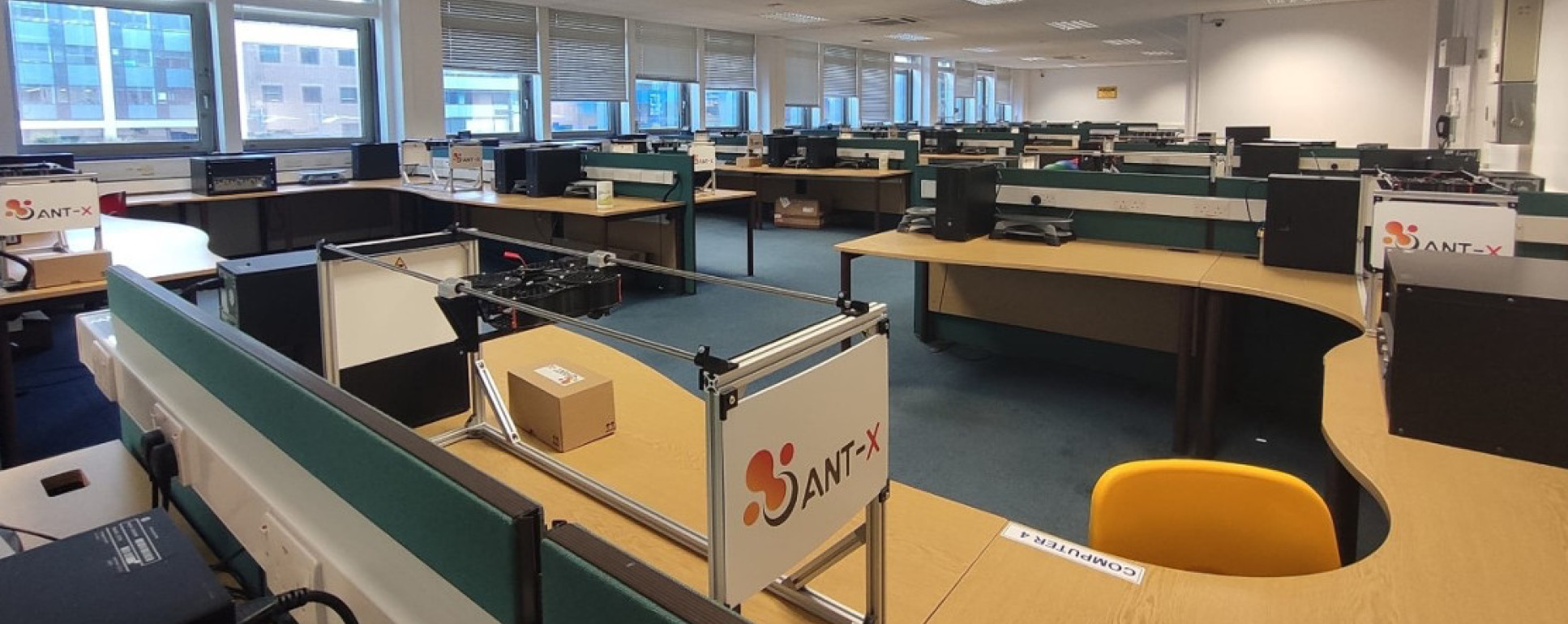Remote learning gets ready for take off with a new fleet of lab drones
by Jane Horrell
An innovative laboratory experience will enable students to program and control real drones live — from wherever they are in the world.
Thanks to a collaboration between the EEE department and drone company ANT-X, we are able to deliver a new high-quality and engaging learning experience, which will also enable us to teach remotely as part of our 'multimode' approach to teaching — on-campus learning, including laboratory work, combined with its remote counterpart.
Translating theory into practice
The recently redesigned Control Systems module, starting next term, will give undergraduate students a foundation in the theory and practice of modern control engineering, combined with a real-life application in a working drone.
The blend of Control theory and the physical hardware with the computer software elements will bring added value for both cohorts that I think they will really enjoy.” Professor Thomas Parisini Control Systems module leader
Module leader Professor Thomas Parisini says he thinks the new curriculum will mark a big change in our teaching of this subject, putting control systems design at the heart of the topic from the very beginning.
“For the first time, our students on the Electronics and Information Engineering degree programme will join the EEE cohort in a unique new Control Systems Engineering module.”
“Students will be learning about control of physical systems, but also from day one they will get an understanding of the software needed to control those physical systems. The blend of Control theory and the physical hardware with the computer software elements will bring added value for both cohorts that I think they will really enjoy.”
Fight dynamics
The ANT-X 2DoF (two degrees of freedom) Drone is a ready-to-use platform designed to support educational and research activity in the laboratory. The quadrotor drone has some of its movement constrained on the lab bench, which provides a simplified but accurate representation of the dynamics of a flying drone but means that students can test the flight control concepts they learn in the lectures and problem classes in a safe and controlled environment.
ANT-X has already installed the first half of the fleet of 30 drones, and the remainder will be installed before the Christmas break.

Remote learning
Last spring, when the Covid-19 pandemic focused the education community on adapting teaching and learning experiences for the remote classroom, and moving practical labs online, the work that had already been done on this new Control module was about to prove to be very valuable.
In response to the pandemic the team from ANT-X and Imperial were able to develop specialised kit to let us run the drone experiments remotely.
ANT-X CEO Simone Panza explains: "The 2DoF Drones will be complemented by the Remote Kit, a plugin to the 2DoF Drone which allows operating the drone remotely, virtually making the laboratory facility available from anywhere. The student, equipped with an internet connection, can connect to the 2DoF Drone and run experiments without the need to be physically present in the place where the machine is located."
A team of people have worked hard to design and adapt this new learning experience for our students, and we would like to thank ANT-X and from EEE — Senior Teaching Fellow Zohaib Akhtar, and Giordano Scarciotti and Hamed Rezaee from our Control and Power research group.
Article text (excluding photos or graphics) © Imperial College London.
Photos and graphics subject to third party copyright used with permission or © Imperial College London.
Reporter
Jane Horrell
Department of Electrical and Electronic Engineering